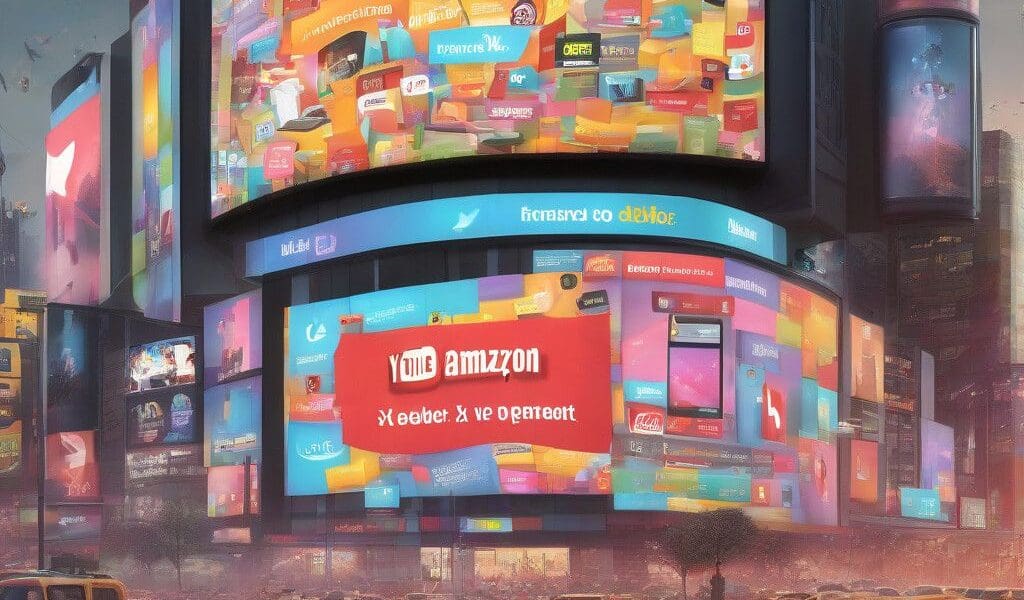In an ever-changing digital advertising landscape, the results from Kantar’s Media Reactions 2024 report highlight significant shifts, showcasing YouTube and Amazon as the preferred ad platforms for marketers and consumers alike. Simultaneously, the report exposes the declining confidence in X, formerly known as Twitter.
According to the survey, which involved approximately 18,000 consumers across 27 markets and 1,000 senior marketers, YouTube continues to hold an impressive lead among marketers, establishing itself as a reliable choice for advertising investments. The platform’s ability to connect brands with large audiences through engaging video content makes it a favorite in a marketer’s toolkit. In contrast, for consumers, Amazon and TikTok have emerged at the forefront, underlining their emphasis on creating relevant and engaging advertising experiences.
Amazon’s advertising strategy is particularly striking. As a platform deeply integrated into the shopping journey, Amazon has successfully positioned its ads as not only relevant but also indispensable. Customers frequently encounter advertisements that align with their purchasing intentions, making them feel more organic and tailored. For example, if a user browses for kitchen appliances, Amazon serves ads that suggest complementary products, enhancing the shopping experience rather than interrupting it. TikTok, on the other hand, charms users with entertaining and creative videos, which resonate deeply with a younger audience, further solidifying its stance as an effective platform for brand engagement.
The report also marks the noteworthy entry of Netflix to the advertising scene, following its evaluation for the first time this year. With its well-established brand reputation and an emphasis on brand safety among marketers, Netflix quickly climbed into the top five ranks for both consumers and marketers. The platform’s content-driven model provides integrative and non-intrusive advertising opportunities, allowing it to harness a loyal viewer base.
Conversely, the same report shines a light on the troubling trend surrounding X. The feedback from marketers reveals a substantial dip in confidence and planned ad spending on the platform. With a net of 26% of marketers planning to cut their investments in X for the upcoming year, concerns about brand safety loom large. Trust in advertising on the platform has plummeted dramatically—from 22% in 2022 to a dismal 12% in 2024—highlighting the need for brands to reassess their advertising strategies in this territory.
Gonca Bubani, Global Thought Leadership Director, Media at Kantar, emphasizes the pivotal role of trust in advertising effectiveness. She states, “Advertisers have been moving their marketing spend away from X for several years. The stark acceleration of this trend in the past 12 months means a turnaround currently seems unlikely.” As brand custodians, marketers seek platforms where their advertisers are safe, leading to an exodus from X.
The preferences observed in the report also extend to different media channels utilized by both consumers and marketers. Point-of-sale (PoS) advertising has overtaken sponsored events among consumer favorites, acclaimed for its trustworthiness and utility without being overly intrusive. Cinema ads, newspaper ads, and out-of-home advertising also maintain a solid presence, indicating diverse consumer preferences.
Here’s how the top digital media brands rank for consumers and marketers:
Consumers:
1. Amazon
1. TikTok
3. Instagram
4. Google
5. Netflix
Marketers:
1. YouTube
2. Instagram
3. Google
4. Netflix
5. Spotify
With the increasing complexity of digital advertising, understanding consumer preferences is vital. The report reveals mixed attitudes toward generative AI (GenAI), where 62% of consumers and 68% of marketers express positivity. However, just 59% of consumers are comfortable with AI-generated ads, in contrast to 71% of marketers who show openness.
Over the last decade, consumer receptivity to advertisements has increased significantly, with 47% of consumers now welcoming ads compared to only 24% in 2020. This shift underscores an evolving landscape where advertising techniques must adapt to audience expectations.
Bubani summarizes the findings, stating, “Campaigns which reach more receptive audiences are seven times more impactful.” The importance of aligning the right channels, media brands, and creative formats cannot be overstated. To succeed in today’s fragmented advertising environment, it is essential for brands to grasp cultural and media dynamics, deliver high-quality content, and ensure it resonates authentically with diverse audiences.
In conclusion, as YouTube and Amazon solidify their positions as leaders in the advertising arena, marketers must reassess their strategies in light of shifts in consumer preferences and declining trust in platforms like X. By embracing the trends identified in Kantar’s report, businesses can better navigate the complexities of digital advertising and optimize their campaigns for maximum impact.












